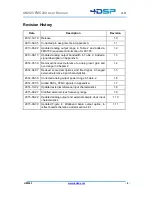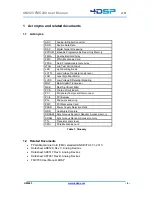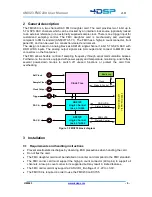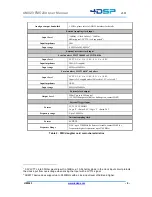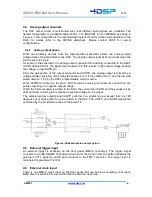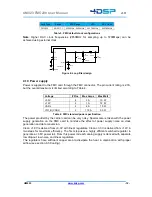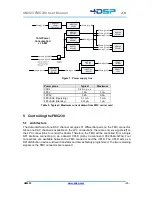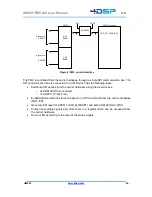
UM023 FMC230 User Manual
r1.11
UM023
www.4dsp.com
- 10 -
Note: When internal clock is enabled and there is no need for an external reference, it is
highly recommended to leave the clock input unconnected to prevent interference with
the internal clock.
4.7 External reference input
There is one MMCX reference input on the front panel that can serve as reference clock input.
Refer also to section 4.9 for more information about the clock tree.
Note: When internal clock is enabled and there is no need for an external reference, it is
highly recommended to terminate the reference input with 50
Ω to ground, to prevent
interference with the internal clock.
The external reference input connects to the single ended, high-impedance, REF2 input of the
AD9517 clock generator. The input is DC-coupled to support reference frequencies below
20MHz. The AD9517 has got an internal self-bias voltage of 1.5V. The single ended input
characteristics of the clock generator specify V
IL
< 0.8V and V
IH
> 2.0V.
If the external reference source is DC-coupled, make sure that the V
IL
< 0.8V and V
IH
> 2.0V
levels are met. If the external reference source is AC-coupled, the clock generator uses its
self-bias to pull its reference input to the offset level of 1.5V. The required AC voltage swing
ranges from 1.4V
pk-pk
to 2.2V
pk-pk
.
4.8 External clock output
There is one MMCX clock input on the front panel that can serve as sampling/reference clock
output. Refer also to section 4.9 for more information about the clock tree.
4.9 Clock tree
The FMC offers a clock architecture that combines flexibility and high performance.
Components have been chosen to minimize jitter and phase noise and reduce degradation of
the data conversion performance. The user may choose to use an external sampling clock or
an internal sampling clock.
The clock tree has a PLL and clock distribution section. The PLL ensures locking of the
internal VCO clock to an external supplied reference. There is an onboard reference which is
used if no external reference is present. The onboard reference is a QuartzCom TX3-801
30.72MHz.


